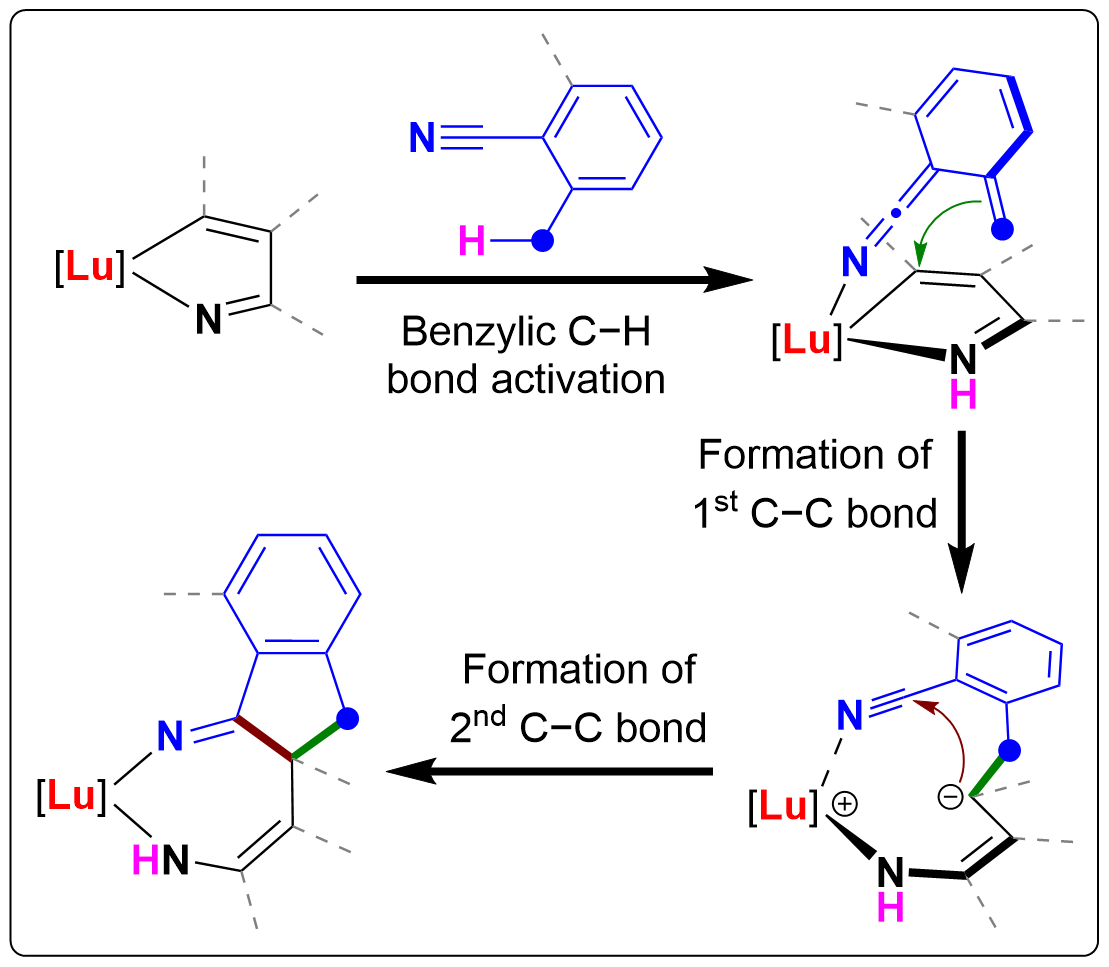Cascade C−H Activation and Two C−C Bond Forming in Reaction of Azalutetacyclopentadiene with 2-Methylbenzonitriles
Zhengqi Chai, Ze-Jie Lv, Wei Liu, Jinxiao Yang, Junnian Wei, and Wen-Xiong Zhang*
Chem. Eur. J. 2024, 30, e20240231.
https://doi.org/10.1002/chem.202402311.

Azametallacyclopentadienes are an important class of metallacycles as the key intermediates in metal-promoted or catalyzed carbon-carbon coupling reaction of nitriles and alkynes. Rare-earth azametallacyclopentadienes have shown various reactivity toward nitriles, depending on the substituents of nitriles. The reaction of azalutetacyclopentadienes toward 2-methylbenzonitriles has been investigated in this work, which selectively affords the fused 7-5-6-membered azalutetacycles as products. Computational studies reveal that the reaction of azalutetacyclopentadienes toward 2-methylbenzonitriles selectively initiates with the remote activation of the benzylic C−H bond by the Lu−N bond, followed by the intramolecular nucleophilic attack from the deprotonated benzylic carbon to form a C−C bond. Subsequently, the high ring strain promoted the generation of the uncoordinated carbanion dissociated from the lutetium center, which then undergoes intramolecular nucleophilic attack toward C≡N triple bond to give the final product containing fused 7-5-6-membered azalutetacycle. This work not only achieves highly selective three-step cascade reaction to form a unique class of rare-earth metallacycle, but also provides a new idea for the transformation of unsaturated substrates with C−H bonds that can be activated.




